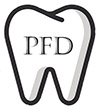Periodontal Disease Treatment
Periodontitis, more commonly known as gum disease, starts with bacteria in the mouth and may progress to tooth loss if not addressed. There are a number of treatments available, and the dentist will choose the one that is appropriate to the stage of the disease and the patient’s general health. The treatments can be as simple as controlling bacterial growth or as complex as tissue restoration.
Non-Surgical Treatment
Some patients may be able to opt for a non-surgical approach in treating periodontal disease. The two most common methods are:
- Professional cleaning. During a regular exam, the dentist or hygienist will remove tartar and plaque that has built up both on the teeth and below the gum line. If there are signs of gum disease, the patient should have cleanings more often than twice per year.
- Scaling and root planing. This method is a deep cleaning that is done under a local anesthetic. Tartar and plaque above and under the gumline is removed, and rough areas on the teeth are smoothed out, which allows the gums to cleanly re-attach to teeth.
Surgical Treatment
More serious cases of periodontal disease require surgical treatment.
- Pocket reduction and flap surgery. This procedure involves lifting the gums back and removing heavy tartar buildup to eliminate areas where bacteria can grow. The gums are then put back around the teeth. The end result is less space between teeth and gums, reducing the chance of gum disease returning.
- Bone grafting. This approach utilizes the patient’s bone, donated bone or synthetic bone to replace natural bone destroyed by periodontal disease. The grafts create a foundation for new bone growth, which makes teeth more stable.
- Soft tissue grafting. This method acts as a reinforcement for thinning gums or fills in the areas where gums are receding. The tissue used for the graft is taken from the roof of the patient’s mouth.
- Guided tissue regeneration. This procedure is done when the bone that supports the teeth has been completely destroyed. It stimulates new growth in both bone and gum tissue and is usually done during a flap surgery. A mesh fabric is placed between the gum tissue and the bone to allow for optimum regrowth and tooth support.
- Bone surgery. This evens out craters due to bone loss and involves reshaping the bone around the tooth to reduce bacterial growth.
Patients may also be prescribed antibiotics alone or in addition to surgery or other treatments. Some may need to use a toothpaste that combines an antibiotic with fluoride to reduce a serious plaque and gingivitis problem.

